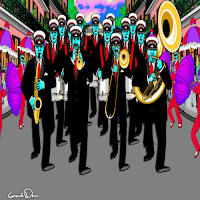The introduction of Kodachrome color reversal film for 16 mm in 1935, and for 8 mm in 1936, facilitated home color cinematography. The availability of reversal film, both black-and-white and Kodachrome, was very important to the economics of home movie-making because it avoided the expense of separate negatives and positive prints.
The original 8 mm format was largely superseded within a few years of Kodak's 1965 introduction of Super 8 film. The Super 8 format used the same film width as standard 8 mm, but the perforations were smaller, making room for larger frames that yielded a clearer image. In addition, Super 8 film came in cartridges for easier loading into the camera.[3] Single-8, a competing product from Fujifilm, was also introduced in 1965. It used the same new format as Super 8 but on a thinner polyester base and in a different type of camera cartridge.














































